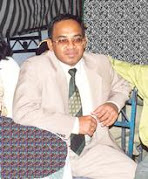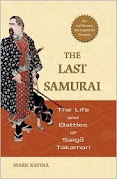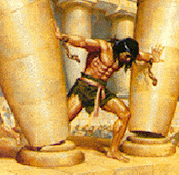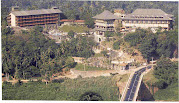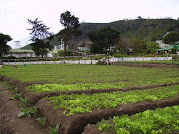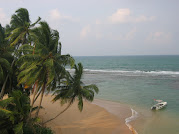









SRILANKA HOLIDAYS: MIHINTALE, SRI LANKA
THE ROAD TO MIHINTALE
In SRI LANKA HOLIDAYS, the road to prime cultural site of Mihintale mountain range of Sri Lanka’s north central plains begins at non other than the greatest monastic city of the world ever, Anuradhapura. The site is located 12km east of Anuradhapura & close to the Anuradhapura -Trincomalee road. Mihintale, the cradle of Theravada Buddhism in Sri Lanka is home to numerous stupas that belonged to the several ancient monasteries established in the mountain range. The largest stupa of these monasteries, that can be seen miles away from the site, is strikingly beautiful. Tour the ancient island of Sri Lanka with My Sri Lanka Holidays. Contact Riolta Lanka Holidays today.
The mountain range is a lone group of hills rising out of the plain to a height of about 350 meters. It consists of three main hills, i.e. Ambastala (Plateau of the Mango), Rajagiri kanda (Mountain of the Kings) & Anaikutti (Mountain of the Elephant) is believed to have been sanctified by no less a person than Buddha himself, three centuries before the advent of Arahath Mahinda. That was prior to the beginning of recorded history (543 BC) of the ancient nation of Sinhalese of Sri Lanka.
The famous Deer Hunter of the Resplendent Island of Lanka
Mihintale mountain range called Missaka Mountain during the reign of Sinhalese King Devanampitassa (Tissa 'Beloved of Gods')(reigned (307-266 BC) seemed to have been the deer game range of the royals. On the full moon day of Poson (June) of 307 BC the king in the course of a game hunt arrived at the foot of the hill. Having found his game, yet not wishing to shoot the beast unawares, the king opted to sound his bow string; whereupon the deer took to the run with the king giving the chase in hot pursuit.
In the mean time the Arahath Mahinda (the name Mahinda is derived from the Hindu name Mahendra, meaning Great Indra, Lord of Heaven according to Hindu mythology) the son of Great Mauryan Emperor Asoka of India had arrived in Lanka together with four other arahaths (supremely enlightened) Ittiya, Uttiya, Sambala, Baddhasala, Pupil priest Sumana Samanera & his nephew layman Upaska Bhandu, his nephew & they having foreseen the arrival of the monarch at the hill, chose to await at the summit of the hill. The king had chased the animal up to the summit, but to his chargin, just on the point of letting fly his arrow, the animal disappeared.
"The Close Encounter" ET in 307 BC
Arahath Mahinda: "Samanas (Buddhist monks) are we, O great king, disciples of the King of Truth. From compassion toward thee are we come hither from Jambudipa. (India)"
King Devanam Piya Tissa: "By what way are you come?"
Arahath Mahinda: "Neither by land nor by water are we come” ( Mahavamsa Ch XIV)
The Mahavamsa OR The Great Chronicle of Ceylon
Translated from Pali into English by Dr. Wilhelm Geiger, Ph. D
Mahavamsa tika. Vamsatthappakasini : commentary on the Mahavamsa
Arahath Mahinda, was thirty two years of age at his arrival to Sri Lanka, spent forty eight years in the island spreading the doctrine of Buddha till his final extinction. The historical narrations of Arahath Mahinda in Mahawamsa & other Sinhalese chronicles was substantiated by an inscription of the second or third century BC found at Rajagala, Eastern province of Sri Lanka which narrates “this is the stupa of the Elder Idika & the Elder Mahida, who came to this island by its foremost good fortune.”
The first recorded intelligence test in the world: the riddle of mango tree
Arahath Mahinda, the Great Sage, wishing to gauge the intelligence of the King so that the sermons of the profound religion could be accordingly carried out, set up a riddle to the king.
“Of what name is this tree, O king?”
“This tree is named ‘mango’.
“Is there any other mango-trees?”
“There are many mango-trees”.
‘Are there any tree other than this & other mango trees?”
‘There are, Venerable Sir, many trees. They are not mango trees.”
‘Apart from other mango-trees & those which are not mango trees, are there any trees?”
“This mango-tree, Venrable Sir.”
‘You are a wise one, O lord of men. King, have you kinsfolk?”
“There are many, Venrable Sir.”
“King, are there those who are not your kinsfolk?”
“There are many more than the kinsfolk.”
“Could there be any beside your kinsfolk & others”
“Only me, Venerable Sir.”
“Good, you are a wise one, O lord of men.” (16-21)
Mahavamsa Chapters one to thirty seven
Translated by Dr. Ananda W. P. Guruge Ph. D. ISBN -955-20-8963-8
First sermon on the mount: the parable of the Elephant’s footsteps
The Cula Hattipadopama Sutta, as recorded in the Majhima Nikaya, the Second Book of the Sutta Pitaka, one of the three divisions of the Tripitaka, the total collection of Buddhist doctrine is written in Pali, is a parable based on the footprints of an elephant.
The message of Thera Mahinda turns out to be, measuring by any standards, the most fortunate gift we Sri Lankans received a little over two thousand three hundred years ago. At that time, during the reign of King Devanampiya Tissa (Tissa 'Beloved of Gods') were we Sri Lankans so very highly cultured, or let me put the question differently, not cultured enough, that our pre-Buddhist king of Anuradhapura took to deer hunting as a royal sport, as some of the big ones in the western world did almost until the other day? King Tissa was a gentleman of deep convictions, but a somewhat spoilt one. Nevertheless, within three days of meeting Thera Mahinda [and resulting from his associations with his unseen good friend Emperor Asoka of India], Tissa pledged to govern the country, submitting himself to the good counsel of governance of the Buddha [sambuddhanaya anto ‘ham vasissami jutindhara - Mhv. XV. vv. 182 ff.]. There was neither pressure nor persuasion on him at that time from anywhere, via religion, political authority or ethnic dominance. His cultural identity was unassailable. Luck would have it, his friendship with Asoka was not a stop-gap alliance.
Ven. Professor Dhammavihari Thera
Quote
Never had a missionary such a response. The king & all his followers were there & then converted, & the construction of monasteries & shrines for the relics of the Buddha became the daily occupation of the royal convert. On the mountain were constructed numerous rock cells as home for the faith. Tissa , with two elephants harnessing on a golden plough, marked the boundaries of the lands, which extended over what is now known as Mahamegaha & Nandana Gardens between the Basawak-kulam & the river. The Thuparama & other shrines arose in Anuradhapura, but Mahinda lived on his mountain with periodic visits to the capital. Mihintale was literary covered with shrines & is known in the chronicles as the Cetiya Mountain, cetiya meaning shrine.the ruinedcells & dagobas testify to the existence of a large community of monks, which probably excedded 3,00 in numbers. Unquote, Jones Bateman: An Illustrated Guide to the Buried Cities of Ceylon, 1932, Kandy
Hundreds of stupas together with a large number of monasteries & ponds were built at the hill resulting in the name Cetiyagiri (The Mountain of Stupas). The present name, Mihintale, meaning Mahinda’s hill in Sinhala is of derived from the name of Arahath (enlightened & broke free from the cycle of birth death & rebirth) Mahinda.
The first wildlife sanctuary in the world
Following the Historical Encounter & the formal introduction of non-violent Buddhism to the Island of Lanka took place in great splendour. Mihintale was declared a wild life sanctuary. "Oh! Great King, the birds of the air & the beasts have an equal right to live & move about in any part of this land as thou. The lands belongs to the peoples & all other beings & thou art only the guardian of it" said Arahat Mahinda to King Devanam Piya Tissa, (Tissa 'Beloved of Gods') the famous "Deer Hunter" 307 BC
Jaya Sri Maha Bodhi
The Asokan edicts in India mentions Sri Lanka as Tamrapani in the Rock Edicts II & XIII as one of the countries conquered by Dhamavijaya (victory of Buddhist doctrine). On the suggestion of Maha Thera Mahinda, an embassy headed by Minister Maha-Aritta, was sent to Emperor Asoka of India by King Devanapiyatissa with a request sister of Thera Mahinda, Theri Sanghamitta, a Buddhist nun should arrive in Sri Lanka to initiate the ordination of the nuns in the island as was the wish of king’s consort Anula & her 500 companions. The request was granted & Theri Sangamitta arrived in Lanka bringing in a sapling of the Bodhi tree (in the shelter of which Buddha attained supreme enlightenment) from Bodhi Gaya. The sapling was ceremoniously planted in Anuradhapura & survives today as the only tree in the world with an authentic history: Jaya Sri Maha Bodhi
THE APRROACH
Ruins of the ancient Ayurvedic hospital (Vejjasala)
A minor road off Anuradhapura–Trincomalee highway leads to the village of Mihintale with the ruins of the 9th century hospital surrounded by lovely mango trees at the front of the site. The ruined outer court of the hospital, where Ayurvedic medicine were hauled in, grounded & stored is also the location of “Ayurveda medicinal bath” for trans-dermal absorption immersion therapy. A large stone has been hallowed in the shape of a human body (unnervingly like a sarcophagus) & was used as a “tub” in which the patient would lay with oil & medicinal herbs for Ayurvedic oil baths. Metal surgical instruments have also been found in the site. There are ruins of rooms for 27 patients & four larger rooms with a small shrine in the middle. During excavations a clay jar with blue glaze similar to those from Iran was found. The Sinhalese chronicle Culavamsa mentions that a hospital was built at Mihintale. A slab of inscriptions found in the location & dating to the 10th century identifies this site as a hospital. The existence of the hospital complex was recorded also by the Chinese pilgrim Bhikshu Fa-Hsien, who visited Lanka in the 5th century AD.
Heinz E Müller-Dietz (Historia Hospitalium
1975) describes Mihintale
Hospital as being perhaps the oldest in the world.
AT THE FOOT OF THE HILL
Museum
This small museum at the foot of the Mihintale mountain enlightens you of the historic site with findings discovered in the area.
Displayed prominently at the entrance is a representation of mythological Mount Meru in the Himalayas, which is ‘the wheel of the earth & the axle of the universe’. It was found in the middle chamber of a dagaba whose inner walls were decorated by the paintings. Making a round clockwise, we can see first room with several Hindu God Ganesh statues, the second room with a collection of medical instruments & artifacts, the next one with clay items including pipes & well rigs. In the last room are Chinese ceramics & a piece of Persian ceramics.
THE ASCENT
The Great stairway
Leaving the hospital & walking towards the foot of the mountain with a height of about one-thousand feet we arrive at the great manmade stairway that leads up to the summit of the hill. The first part of flight of 1840 nicely cut stone stairs are broad, shallow & shaded with venerable old frangipani tree also called ‘temple tree’ (Araliya in Sinhala).
While you climb up, you will have thoughts for food in addition to the bananas: the easy low steps of the stairway, the breadth of the stone steps, the labor needed for painstaking work: cut, dress, and transport and place them one upon other. Gangs of monkeys on both sides of the stairway among the Araliya flower trees put their hands up to vote for bananas.
The stairway is the main gateway to the vast monastic settlement. The ruins, intact monuments & renovated monuments, natural rock cells, hydraulic works, stone inscriptions bears testimony to the ancient Sinhalese Buddhist civilization.
As the steps are climbed one by one, the whole hill opens out to us enthralling the mind & soothing the heart. It takes us to the first platform with no sweat at all. Once we are at the top of the first flight, we can either proceed straight on towards the main sites & the Maha Seya stupa or take the flight of stairs on our right & climb to the Kantaka Dagoba stupa.
The second flight of stairs takes us to another plateau, on which we find ruins of relic house, assembly hall & the refectory.
The third flight takes us to highest plateau called Ambastala, the site of Ambastala Dagoba (sela Cetiya). Out of this plateau spread numerous trials leading to Maha thupa, the largest stup at Mihintale, the Mihindu Seya.
Kantaka Dagoba
The four projecting front pieces called vahalkadas at the four cardinal directions are richly & variously ornamented with bas-relief. The two pillars at the either end of vahalkada are crowned with pairs of animals: elephants facing east; bulls facing south; horses facing west & lions facing north. While front pieces were found in excellent state of conservation, the Kantaka Dagoba stupa was found in ruins resulting in extensive renovation. The stupa built before the 1st century B. C. is the fourth oldest stupa in Sri Lanka next to three other ancient stupas, namely (prior to recorded history of Sri Lanka, i. e. prior to 543 BC.), Mahiyangana stupa Muthiyangana Vihara (5th Century BC) Somawathiya Chethiya (2nd century BC).
Although Vahalkadas (front pieces) can be seen at most of the stupas at Anuradhapura & Polonnaruwa, at Mihintale, vahalkadas are found only at the Kantaka cetiya.
Ata Sata Caves
Easily accessible from the Kantaka Dagoba, among the rock outcrops extending west are located sixty-eight caves with drip ledges & inscriptions. Numerous well-marked footpaths lead us to the caves. Since most of the footpaths follow the edges of the cliff, we must mind the steps.
Most of the inscriptions record that these caves were constructed at the expense of laymen & then gifted to the Buddhist bhikshus (monks). The Mahawamsa (The Great Chronicle) informs us that these rock caves were built during the reign of King Devanampiyatissa.
The Monks Refectory (Bat Ge) (Danasala) (Bojana salava) at the second terrace.
At the end of the second plateau are the remains of the refectory. As the buildings in Abhayagiri & Mahavihara, the refectory at Mihintale too is equipped with the same astonishing granite troughs called “bat oruva” (meaning rice boats in Sinhala) beyond the central courtyard. Different in shape, one was used for rice & the other one for accompanying gruel, curries & vegetables. Evidence has surfaced that the inside of the granite troughs were covered with a layer of metal. Walking towards them, on your right on the hill side is a small aqueduct, a granite cistern supported on pillars, supplying water for drinking as well as for washing. According to Chinese pilgrim Buddhist bhikku Fa hien, Mihintale was home to 2,000 Buddhist bhikkus. To service the Refectory were many servants whose duties & allowances due to them were minutely defined in the Mihintale Tablets, set up in the vicinity. Among these men were the warder of the refectory, the head of the workers, twelve workers that did the cooking, the worker who procures firewood & cooks food, and the worker who brings firewood but does not cook. & the worker who cooks on firewood fetched by others.
Mihintale Tablets (Mihintale Inscriptions)
Between the Refectory (Danasala) & the Assembly Hall are the ruins of what was a Dage meaning Relic House in Sinhala. On each side of the main entrance two huge slabs of granite measuring seven feet by four feet are seen. The tablets, well known by the name of “Mihintale Tablets”, are 10th century inscriptions of King Mahinda have attracted so much attention from the time of their discovery, owing to the interesting account of administration & inner life of a Buddhist monastery narrated therein.
The first portion narrates the rules & regulations of the monastery, & the second part deals with the payments of servants & laborers. The rules give strict injunctions as to the payment of all work either by cash, food stuff or land grants; & the importance of the tablets lies in the fat that these show a truce & vivid picture of a well conducted Buddhist monastery of the tenth century.
‘Caskets furnished with locks shall be deposited in the relic-house, with the seal of the officials of the relic-house, with the seal of the officials at the place of business duly stamped on them.
Slab A, Lines 25-26
“Nothing whatever belonging to the relic house of Et-vehera shall be lent out or be purchase if offered for sale by the officials.”
Slab A, lines 29-30
"for wicks & oil (used for lights) in the relic-house, one payala of the land from this village.
Slab B, lines 35
“To the florists who place white (lotus) flowers in the relic-house (shall be assigned) two kiriya (of land) from this village..
Slab B, LINES 35-36
Texts of the inscriptions at Mihintale, in transliteration along with translation in English, was published in ‘Epigraphia Zeylancia’ (Volume1) by Don Martino De Zilva Wickremasinghe, in 1912
Sinha Pokuna Lion Pond
Major C. M. Enriques of Colonial Ceylon narrates: “the most pleasing of all these monuments is the Lion Bath, a picturesque little reservoir from whose side issues a splendid rampant lion. This is really a very fine composition, & one of the most interesting works at Mihintale from the artistic point of view.”
The surplus water from Cobra Pond is led down the hill through granite pipes some of which are still visible, & falls into a small rock-cut cistern through the mouth of exquisitely sculpted life size lion’s head. Hence is the name Lion pond. The small but pleasant site is half constructed with stone blocks & half carved out of a rocky cliff. It is a square of about 1.8m & a bit more than 2m deep. The pond is supplied with water flowing down from the Naga Pokuna (the Cobra pond) through granite pipes.
Sannipata sala (Assembly hall) (Chapter House)
On the right of the Mihintale tablets & at the foot of the flight of stairs to the Ambasthala Plateau is located the assembly hall of the monastery. There is an entrance on each of the four sides & the centre of the hall is built with an elevated platform where senior monks were probably seated during the assemblies. Forty eight stone pillars supporting the roof still survive.
Naga Pokuna (Cobra Pond)
Having seen everything on the lower terrace now we take the stairs leading further up the mountain. Towards the top of the stairs the pilgrim will notice a path leading off to the right. Proceed along it through the jungle & we arrive at the Naga Pond, an exquisite rock-cut pond with surprising fresh water.
On the dark rockface, rising from the edge of the water cave fashion, is carved a huge seven-headed cobra in low relief on the far end. These five & seven-headed nagas are usually found carved in relief or whole near ponds & tanks or other places connected with water. Near sluices of the rainwater reservoirs of Sri Lanka, rock cut Naga images are a common site. They are supposed to guard the ponds & reservoirs from harm. The fact that King Devanpiya tissa is stated to have rested by this place after he had met Maha Thera Mahinda make us deduce it was in existence prior to 307 BC. The view from here is wonderful with stupas & rainwater reservoirs at Anuradhapura being clearly visible. The foreground herein offers a fine scene of a hill covered with caves.
The water from this fascinating pond is led down the hill through granite pipes some of which are still visible & falls into a small rock-cut cistern through the month of sculpted lion’s head in to the Lion’s Pond. So called because of the huge seven headed Naga calved out of the cliff at the back of the pond. Originally there must have been a small natural pond here but as the demand for water on Mihintale grew this was enlarged and deepened by constructing an embankment around it. The Mahavamsa calls this place the Nagacatukka and says that Mahinda used to bathe here. The large area of exposed rock above the pond acted as a catchment area. Stone pipes from the Naga Pond fed the Lion Fountain on the lower terrace. The water in the Naga Pond is dark but clean and can offer the pilgrim a refreshing swim.
Ambastala Dagoba stupa (Sela Chetiya stupa)
This upper terrace, called Ambastala, is shaded by coconut, tamarind and jack trees.
Sela Chetiya is a small rock stupa at the site of the famous mango tree which was the starting point of famous Mango riddle put forth to King Devanpiyatia by Arahath Mahinda. It was at this site the great sage Arahath Mahinda delivered his first sermon in the island, Cula Hatthipadopama Sutta,
This small dagaba in the centre of the plateau of the Mihintale hill is surrounded by two concentric circles of octagonal stone pillars of same type as those at the Thuparama Stupa. The stupa is in fact a vatadage or circular relic-house. Its current pillars dating from the 7th century had once in the course of history supported a roof. Some of the relics of Arahath Mahinda are said to be enshrined in this stupa. Archeological evidence leads to the conclusion that the original roof was carved out of wood. It is believed that Buddha himself spent some time on this very spot on the occasion of his third visit to Sri Lanka & as such is considered one of the Solosmasthana (sixteen sacred places of worship) in Sri Lanka.
Mahinda cave (Mihindu-Guha) & Mahinda’s bed
We go along the left side of the Ambastala Dagaba heading east & walk through the group of ancient dwellings of monks. Then we climb down the stairs near a big rock & walk down along this path for about 100m to reach a group of rocks with a flight of metal stairs. The bed is in a small cave formed by a gap between two big rocks. Supremely enlightened Mahinda spent the remaining years of his life in Mihintale propagating Buddhism in the island till his final extinction (rather than death) in 259 BC. Following the cremation of Maha thera Mahinda’s ashes were enshrined in stupas throughout the country including one on Mihintale itself.
Chnadrakanti Pasana (Moon Rays Rock)
South at the foot of Ambastala Dagoba on the platform next to the Ambastala Dagaba a polished stone has been laid down to mark the precise spot where Mahinda, the son of the Emperor Asoka of India sat & made his historic sermon. It is fenced by a metal enclosure on which devotees hang prayer flags & other offerings.
Aradhana Gala (Meditation Rock)
Forming a background of towering strength, the huge granite boulder called Aradhana Gala (Invitation Rock in Sinhala) rises precipitously behind Ambastala stupa. This is the location Mahawamsa (The Great Chronicle) of Sri Lanka, identifies as where Buddhist bhikku Maha Thera Mahinda of India appeared to the King Devanampiyatissa of Sri Lanka & gave his first sermon on the full moon day of the month of Poson (April-May) in the year of 247BC. The pupil priest Bhandu, the Arahat Mahinda’s nephew, is said to have invited Devas or gods (most possibly, powerful & resplendent beings living in great splendour in other planets – click here & read para The light & no sound show 2,3,4 of Somawathiya Chetiya) to come down from their domains to listen to the teachings of Buddha. Hence is the name Invitation Rock.
Maha Seya Dagoba
Coming down from the Aradhana Gala, towards the left are seen shallow rock-cut steps leading up to the picturesque Maha Seya. Its conspicuous white dome at the top of the Mihintale Hill can be seen from far away. The Maha Seya was built by King Devanampiya tissa in 243 BC. It is believed to contain a single lock of hair (Urna Roma Datu) that grew between the eyebrows of Buddha, one of the 32 unique physical signs of a Buddha.
The stupa larger than the Thuparama was renovated at the beginning of the first century by the King Mahadathika Mahanaga(560-563 AD).The legend says that the King himself would come & stay prostrated when the brickwork, due to the sharp slope of the hill, would not hold firm. Then again the stupa was rebuilt by Parakaramabahu the Great (1164-1196 AD).
It was partially destroyed by marauding Dravidian Invaders from South India was repaired by the prisoners at Anuradhapura under Englishman Mr. S. M. Burrows (Ceylon Civil Service), the first Archeological Commissioner (1884-1886). In 1890 government Agent of Colonial Ceylon Mr. Ievers carried out partial restoration to the stupa. It was once again renovated in 1934 under the direction of Illustrious Dr.Senerath Paranavitana the first Ceylonese commissioner of Archeology of Ceylon (1940–1956) of Sri Lanka. His predecessors the British colonial civil servants of Ceylon, to give the devil his due credit, may well be proud of their tireless efforts in restoration of the ancient kingdoms & cities of Ceylon. Hats off to them.
“Minhintale suffered the fate of Anuradhapura at the hands of Tamils, whose ruthless destruction of the shrines was repaid with the great riches which they were embellished. Later kings restored them from time to time, but finally that persistent enemy, the jungle, exerted its sway.” Englishwomen Dorothy Jones- Bateman,Kandy,Ceylon,1932. In her own words she was suffering from a “bump of antiquity” We love her bump. Those Englishmen discovered, appreciated, restored, kept records, wrote & published all in Great Britain. Nobody would do any better.
“Notwithstanding their numbers & their power, it is remarkable that the Malabars were never identified with any plan for promoting the prosperity & embellishment of Ceylon, or with any undertaking for the permanent improvement of the island. Unlike the Gangetic race, who were the earliest colonists, & with whom originated every project for enriching & adorning the country, the Malabars aspired not to beautify or enrich, but to impoverish & deface;- & nothing can more strikingly bespeak the inferiority of the southern race than the single fact that everything tending to exalt & to civilize, in the early condition of Ceylon, was introduced by the northern conquerors, whilst all that contributed to ruin & debase it is distinctly traceable to the presence & influence of the Malabars”
Ceylon An Account of The Island Physical, Historical & Topographical by Sir James Emerson Tennent, K.CS. LL. D &c. 1859 London
Malarbars – Maruading Dravidian invaders from Southern India
Southern race - Maruading Dravidian invaders from Southern India
Gangetic race - Aryan Sinhalese settlers of the island of Sri Lanka from East India
For the complete narration of 2550 years of unbroken recorded Agrarian & Buddhist civilization of Sri Lanka, Sinhalese & the destruction of capitals Anuradhapura, Polonnaruwa by marauding Dravidian invaders from Southern India please refer Mahawamsa (The Great Chronicle) & visit Anuradapura, Polonnaruwa, Sigiriya, Mihintale, Yaphuwa & numerous other historical & cultural sites of Sri Lanka.
Mihindu Seya, the Stupa of Mahinda
Being on the highest point of all the sites, this little dagaba, is believed to enshrine the relic of Maha thera Mahinda. This modest dagba, kept as it is discovered, without being restored, is situated west from the massive Maha Seya. On the ridge extending south-west towards its highest point is another dagaba, the Et Vihara.
Et Vehera (The stupa of the Eelphant) (Hatti Vihara) Monastery
A strenuous climb of 600 steps from Naga Pokuna leads up this inner temple, at the highest elevation in Mihintale. Though the small stupa is not very impressive, it is worth go a long way to see the enchanting panorama suddenly unfold before our eyes, from this peak of Nuwarakalaviya. The endless rolling seas of vivid green is broken by patches of water, reflecting the heavens as if pieces of the sky had suddenly fallen down, & the little ships of hillocks all merging in the misty horizon, while towards the south, the three mighty dagaba as of the city looking for all the world like the lumps of local Loch Ness monster, all go to provide a rare sight which cannot be easily forgotten.
Archaic Brahmi scripts (2nd or 3rd century BC) have been found on some bricks in the foundation. During excavation works, an unknown old type of earthen ware was discovered. It was a reliquaries’ casket made of three compartments in which were found ashes & bones as well as golden reliquary in the shape of a dagaba from India. It was built to enshrine the remains of Maha Thera Mahinda by King Uttiya around the years 267-256 BC
BACK TO THE MAIN ROAD AT THE FOOT OF THE HILL: OUTLYING REMAINS
Indikatu Seya
In between the main stairway on the eastern slope & the Kaludiya Pokuna are the ruins of Indikatu Seya stupa.
The interest of this small dagaba of a height of 30 feet lies in its particular style. It is constructed on a raised platform paved with stone slabs. Its dome is partly covered with carved granite, a feature which is not common on other dagabas of the region. It is about 6m in diameter.
The discovery of copper plates with Sanskrit inscriptions written with Sinhalese characters of the 8th-9th century asserts its Mahayanism, a school of Buddhism that differs, more in practice than in theory, from the orthodox school, the Hinayana or Theravada. The sputa is believed to have been built by King Kutta Kanna Tissa in the latter part of the first century BC & come under the influence of the Abhayagiri Vihara, the main center of Mahayanist activity in Anuradhapura since the third century AD.
Kaludiya Pokuna
At the foot of western slope of Mihintale hill is located Kaludiya Pokuna meaning “The Black Water Pond” in Sinhala. The reason for the appellation is not known. Kaludiya pokuna, more like a reservoir, is the largest pond of the hydraulic system of the site. The layout and structure of Kaludiya Pokkhana complex has much in common with monasteries at Ritigala and Arankale and as such, it is believed to be a sanctuary of the Pansakulakas sect of the Mahayana school of Buddhism in the island. Kaludiya Pokuna is certainly a lovely place with peaceful & serene environment. An inscription herein says that Kassapa IV built a monastery at Mihintale called Hadauyana Vihara (The Heartwarming Monastery) which would be a very appropriate name for this place.
Rajagiri Kanda
Rajagiri Kanda meaning Royal Rock Hill in Sinhala is located about half a kilometer from the entrance to the Kaludiya Pokuna. There is not much left today of the monastery which was located at the foot of the Rajagiri Kanda except for a stone door frame, two guardstones & a Nidhi or guardian of the treasure of the god Kuvera, the God of wealth.
Scattered all over the hill, which rises prominently above the surrounding jungle, is a series of natural caves once home to enlightened Buddhist bhikshus.
One of the caves was occupied by an elder monk named “Dharma-gupta”. The pre-Christian Brahmi inscription incised below the drip ledge of his cave reads: Damaguta Thera Lena, the cave of Elder Dharma-gupta.
“… Forty le to the east of the Abhayagiri Viharae is a hill, with a vihare on it, called the Cheitiya, where there may be two-thousand monks. Among them there is a Sramana of great virtue, named Dharma Gupta, honoured & looked up to by all the kingdom. He has lived for more than fourty years in an apartment of stone.”… “And, such is his compassion, he can make serpents & mice live together without injuring each other.”
Fa Hien
Inscriptions herein narrate that among benefactors who made these natural caves habitable to humans & gifted them to the Buddhist bhkishus was a Pramuka (chief) & his wife by the name Sena. One of the inscriptions was written in Nagari script (8th-11th century) providing the definite evidence the site was once under the influence of the Mahayana school of Buddhism. The latest inscriptions, written in Sanskrit, too belong to the Mahayana sect & are dated from the 9th century.
Poson Full Moon Festival in June
The June moon ushers in the Poson festival, which is held in commemoration of arrival of Buddhism to Sri Lanka. Mihintale then comes to life. The roads crowded with pilgrims are replete with free food stalls (Dan sal); on the old stairway we meet thousands of devotees of the gentle faith, their hands full of blue lotus & other blossoms. Thousands of tiny Petri-dish like brownish red baked clay lamps adorn the pathways & airy lanterns of vivid colours adorn numerous sites of Mihintale. Altars are rich with scent of flowers, the universal offering.









